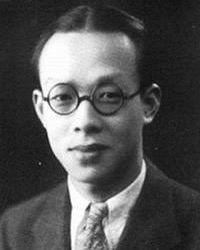Pinyin was adopted by China in 1958. It is a system of romanizing Chinese characters using the Western alphabet and gave readers unfamiliar with Chinese characters a crucial tool to understand how to pronounce them.

The person who invented Pinyin, is no other than Zhou Youguang (周有光). Zhou was born Zhou Yaoping (周耀平) in Changzhou (Changchow), Jiangsu Province, on 13 January 1906 to a Qing Dynasty official.
Zhou was educated at China’s first Western-style university, St. John’s in Shanghai, studying economics with a minor in linguistics. He subsequently transferred to Guanghua University, from which he graduated in 1927. While working for Sin Hua bank, he was stationed overseas first in New York City and then in London. Apparently during his time in the United States, he met Albert Einstein twice.
He returned to Shanghai in 1949, where he taught economics at Fudan University for several years.
He was a good friend of Zhou Enlai (the first Premier of the People’s Republic of China). Zhou Enlai remembered the economist’s fascination with linguistics, he then summoned Zhou to Beijing in 1955 and tasked him with developing a new alphabet for China. Zhou appointed as the head of a committee to reform the Chinese language to increase literacy.
He told them that he was an amateur, a layman, and that he couldn’t do the job. But they said, it’s a new job, everybody is an amateur. Everybody urged him to change professions, so he did.
It took Zhou and his colleagues three years to come up with the system now known as Pinyin, which was introduced in schools in 1958.
Zhou died on 14 January 2017 at his home in Beijing, one day after his 111th birthday; no cause was given.